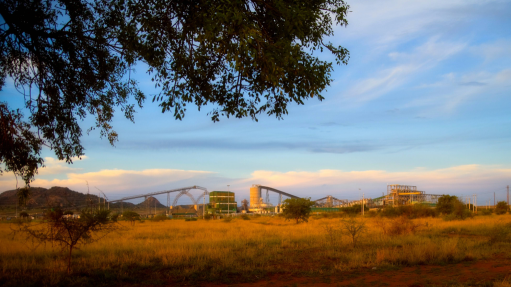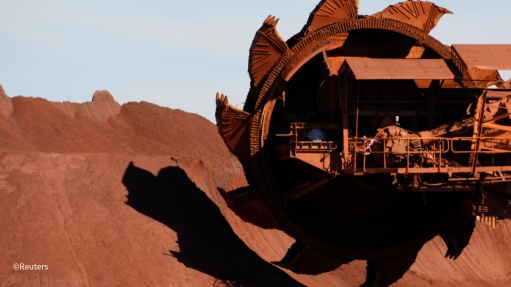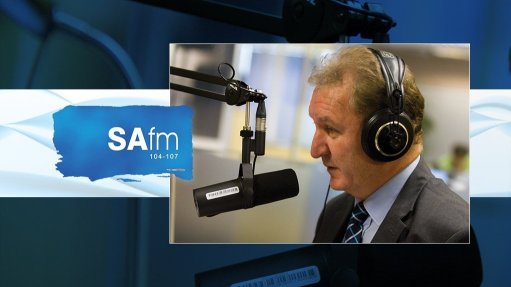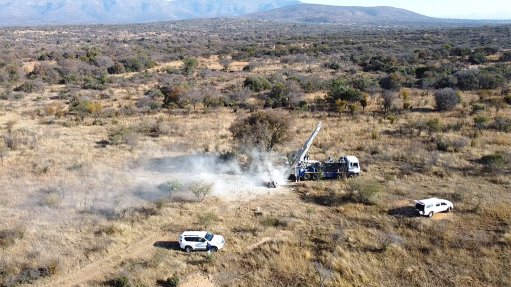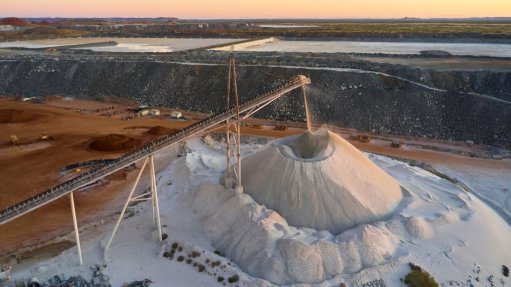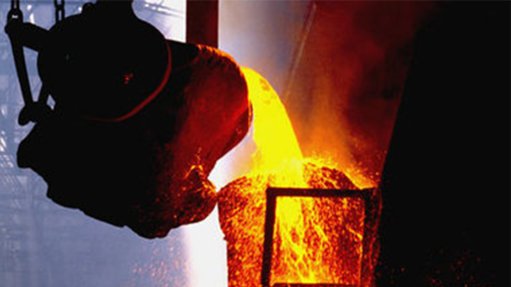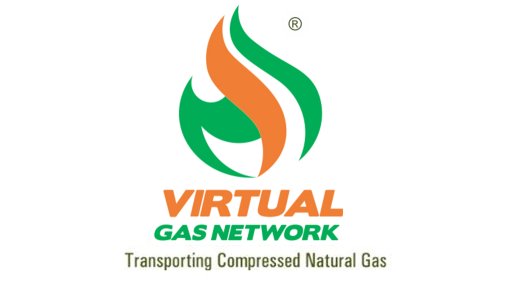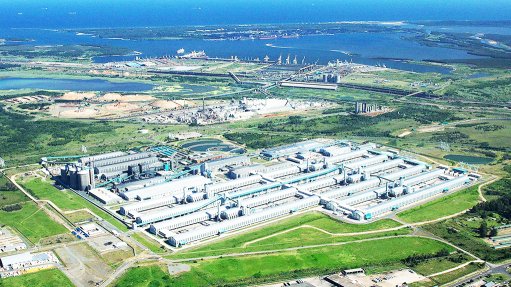Dept continues to drive hydrogen competency building, invites more private collaboration

DSTI acting chief director for hydrogen and energy Mandy Mlilo shares how far the HySA programme has evolved
As part of its Decadal Plan 2022 to 2032 to support the commercialisation of intellectual property (IP) and increase collaboration in the business sector, the Department of Science, Technology and Innovation (DSTI) will soon call for proposals to promote the deployment of large-scale demonstration projects, including in the hydrogen space.
During the Southern African Institute of Mining and Metallurgy’s (SAIMM’s) Hydrogen and Fuel Cell conference on April 7, DSTI acting chief director for hydrogen and energy Mandy Mlilo confirmed that government was establishing a platform through an energy secretariat for both private- and public-sector entities to participate in the energy research, development and innovation (RDI) flagship programmes supported by the DSTI.
Notably, Mlilo said the DSTI aimed to support local manufacturing of components based on publicly-financed IP with an emphasis on the development of value-added components emanating from the four energy RDI flagship programmes, including Hydrogen South Africa (HySA).
The energy secretariat of the DSTI will also focus on inbound technology transfer, where in its engagements with global original-equipment manufacturers, the DSTI has insisted on potential partners agreeing to integrate locally developed technologies into their commercial products.
The DSTI ultimately wishes to co-develop more technologies and commercialise IP where synergies exist, as well as build skills in the energy sector.
The DSTI has spent R1.4-billion to fund HySA as of March 31, 2024, and received R275-million in co-funding arrangements with industry participants. HySA’s work has included three phases, including the establishment of research and development capability, demonstration and validation of technology and the commercialisation of South African innovation.
HySA has been granted 60 IP rights, with nine trademarks. More than 70% of its IP has been linked to commercial products.
HySA now comprises three operating divisions: infrastructure that is supported by North West University and the Council for Scientific and Industrial Research; catalysis that is supported by University of Cape Town and Mintek; and systems that is supported by University of the Western Cape (UWC).
HySA’s competencies include fuel cell and electrolyser production, hydrogen compression, storage, distribution and refuelling stations.
The organisation’s deployments include fuel-cell-powered systems at clinics, schools and disaster management centres at various sites in North West, Gauteng, the Western Cape, the Eastern Cape and KwaZulu-Natal.
Mlilo is confident that work is progressing on the Hydrogen Society Roadmap for South Africa, which helps guide the DSTI and HySA in its mandate of a competitive hydrogen economy by 2050.
Meanwhile, work on the Platinum Valley Corridor has identified nine catalytic projects in the mobility, industrial and buildings sectors. About $1.2-billion is required to build a 185 000 t/y hydrogen production and transport corridor by 2030, including through manufacturing hubs and scale-shared hydrogen infrastructure.
Not only is the DSTI committed to expanding the hydrogen economy, but various departments and entities are involved through an inter-departmental committee comprising the Ministry of Electricity, as well as the departments of Transport; Mineral Resources and Energy; Trade, Industry and Competition; International Relations and Cooperation; Forestry, Fisheries and the Environment; Planning, Monitoring and Evaluation; Public Works and Infrastructure; Small Business Development; and the National Treasury. The committee also includes officials from provincial governments.
South Africa is currently the chair country of the International Partnership for Hydrogen and Fuel Cells in the Economy, with the aim of encouraging more African countries to join the partnership.
Mlilo affirmed that South Africa had a healthy portfolio of IP in key components such as platinum group metals-based catalysts for fuel cells and electrolysers, which were ready to be integrated in commercial products to achieve enhanced commercialisation and sustainable local manufacturing.
UWC chemistry professor Lindiwe Khotseng pointed out that while hydrogen fuel cells had the advantages of high power density, high efficiency, low pollution, quiet operation and small footprints, its high cost and durability remained areas of work for all of the HySA partners.
Notably, UWC and others are working to reduce the amount of platinum loading in fuel cells to save costs, enhance stability of the electrode, address losses of activity in cathode catalysts owing to oxide poisoning, improve oxygen reduction kinetics and design cheaper and more effective membranes.
Some of the strategies to reduce hydrogen production costs include scaling up electrolysis and leveraging economies of scale, advancing electrolyser technology to operate at higher densities, reducing renewable-energy costs for green hydrogen production, and using waste-to-hydrogen and biohydrogen production methods.
SAIMM president Dr Elias Matinde said his organisation also continued to work to advance green hydrogen technologies in Southern Africa and the global community, highlighting in particular the power of renewable and sustainable technologies and addressing challenges through engagement and collaboration.
As of April 7, the organisation had 2 622 members across 51 countries.
SAIMM regularly publishes academic papers related to hydrogen production, fuel cell systems and using hydrogen in beneficiation processes, including to produce green steel and to power operations.
Article Enquiry
Email Article
Save Article
Feedback
To advertise email advertising@creamermedia.co.za or click here
Announcements
What's On
Subscribe to improve your user experience...
Option 1 (equivalent of R125 a month):
Receive a weekly copy of Creamer Media's Engineering News & Mining Weekly magazine
(print copy for those in South Africa and e-magazine for those outside of South Africa)
Receive daily email newsletters
Access to full search results
Access archive of magazine back copies
Access to Projects in Progress
Access to ONE Research Report of your choice in PDF format
Option 2 (equivalent of R375 a month):
All benefits from Option 1
PLUS
Access to Creamer Media's Research Channel Africa for ALL Research Reports, in PDF format, on various industrial and mining sectors
including Electricity; Water; Energy Transition; Hydrogen; Roads, Rail and Ports; Coal; Gold; Platinum; Battery Metals; etc.
Already a subscriber?
Forgotten your password?
Receive weekly copy of Creamer Media's Engineering News & Mining Weekly magazine (print copy for those in South Africa and e-magazine for those outside of South Africa)
➕
Recieve daily email newsletters
➕
Access to full search results
➕
Access archive of magazine back copies
➕
Access to Projects in Progress
➕
Access to ONE Research Report of your choice in PDF format
RESEARCH CHANNEL AFRICA
R4500 (equivalent of R375 a month)
SUBSCRIBEAll benefits from Option 1
➕
Access to Creamer Media's Research Channel Africa for ALL Research Reports on various industrial and mining sectors, in PDF format, including on:
Electricity
➕
Water
➕
Energy Transition
➕
Hydrogen
➕
Roads, Rail and Ports
➕
Coal
➕
Gold
➕
Platinum
➕
Battery Metals
➕
etc.
Receive all benefits from Option 1 or Option 2 delivered to numerous people at your company
➕
Multiple User names and Passwords for simultaneous log-ins
➕
Intranet integration access to all in your organisation







